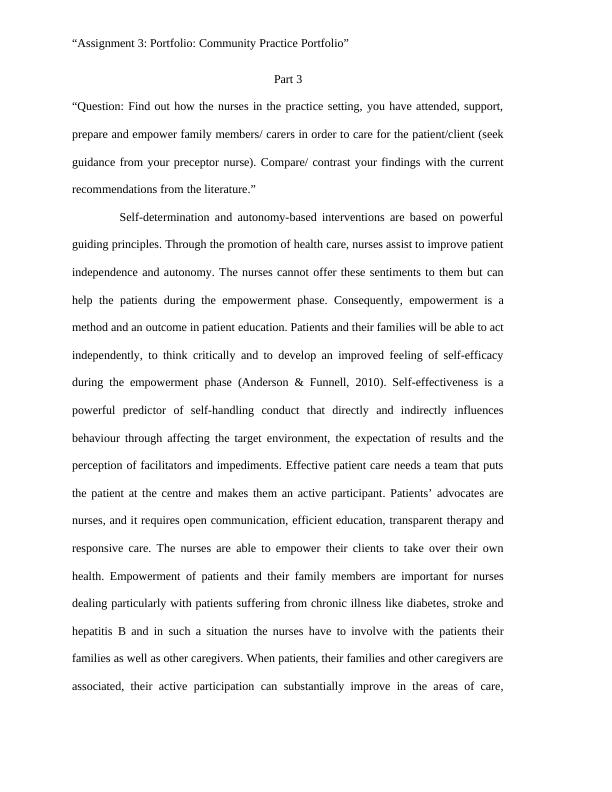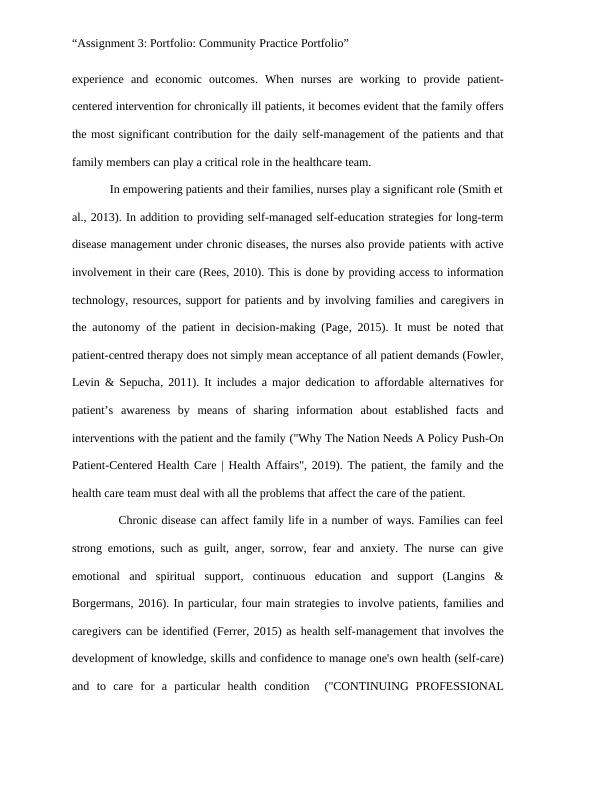The Community Practice Portfolio Question 2022
Introduce Professional Practice Setting and describe the health services provided.
9 Pages1867 Words9 Views
Added on 2022-10-17
The Community Practice Portfolio Question 2022
Introduce Professional Practice Setting and describe the health services provided.
Added on 2022-10-17
ShareRelated Documents
End of preview
Want to access all the pages? Upload your documents or become a member.
Analyzing the Case Study of Arron: Living with HIV/AIDS
|8
|2751
|38
Quality Care For Chronic Elderly Ill Patients PDF
|22
|784
|82
Caring for Patients with Chronic Illness: Community vs. Institutional Care
|11
|2708
|293
Empowering Informal Caregivers Palliative Care
|7
|1754
|15
Article Analysis for Health Care Patients
|4
|1239
|74
CHRONIC AND COMPLE X CARE NURSING FOR COPD PATIENTS
|12
|3213
|239



